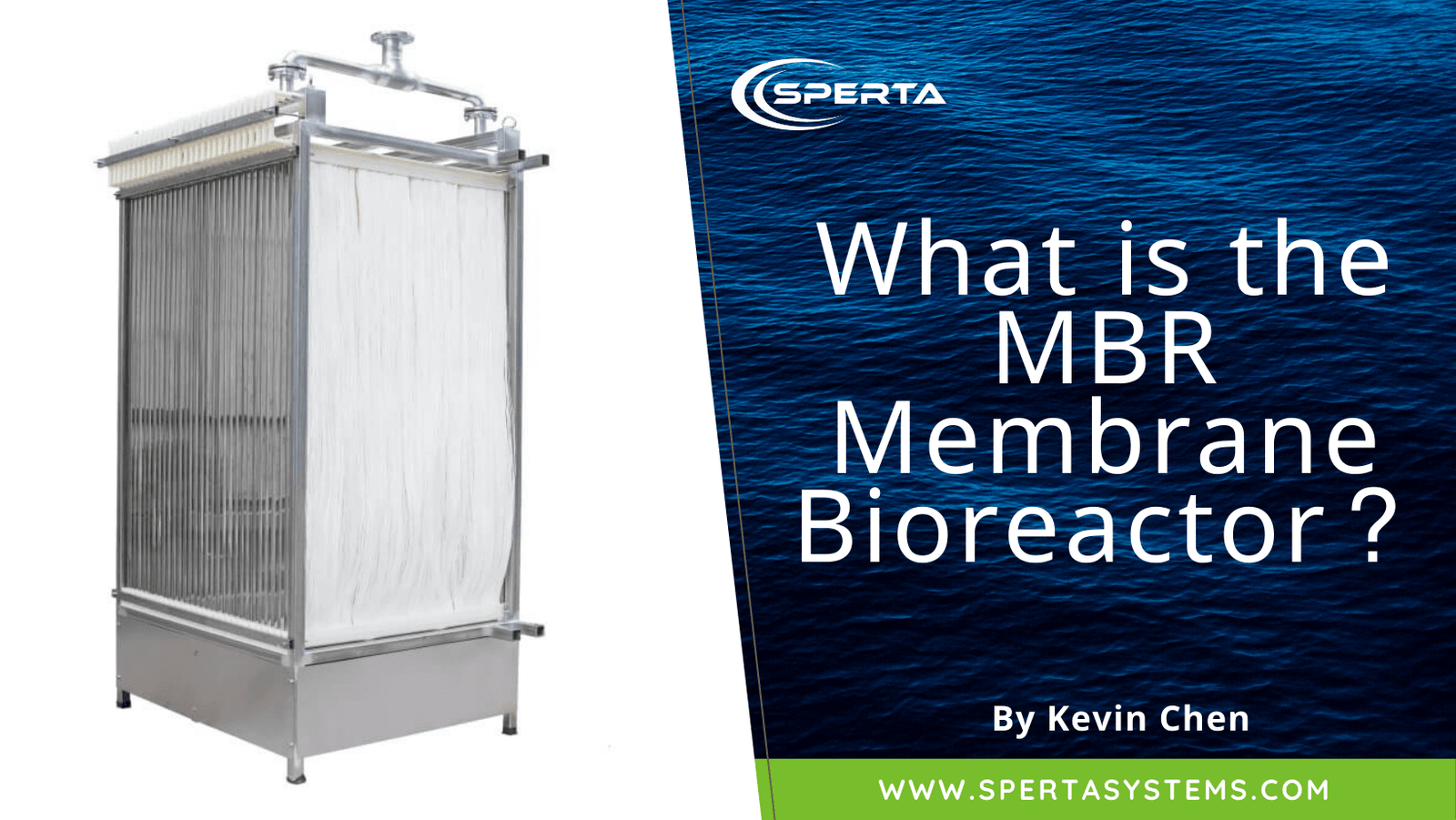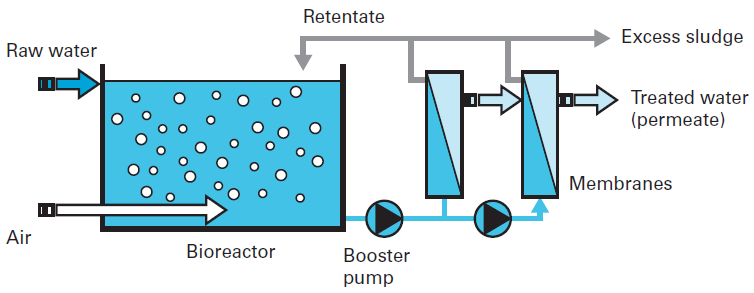Membrane Bioreactor Systems: A Key Technology for Water Reuse and Recycling
Membrane Bioreactor Systems: A Key Technology for Water Reuse and Recycling
Blog Article
Membrane Layer Bioreactors Clarified: Effective Solutions for Tidy Water
Membrane layer bioreactors (MBRs) have actually emerged as a sophisticated solution for addressing the pushing obstacles of wastewater treatment - Membrane Bioreactor. By incorporating biological procedures with sophisticated membrane filtering, MBRs not only enhance the high quality of cured water yet likewise decrease the spatial demands of treatment centers.

What Are Membrane Layer Bioreactors?
Membrane bioreactors (MBRs) are advanced wastewater treatment systems that combine organic deterioration processes with membrane layer filtering technology. This assimilation permits the effective elimination of pollutants from water, making MBRs a recommended option in various applications, consisting of community wastewater therapy and industrial effluent management.

Among the crucial benefits of MBRs is their capacity to create high-quality effluent, often ideal for reuse in irrigation or commercial processes. In addition, MBRs require a smaller sized footprint compared to standard therapy systems, making them optimal for urban settings where room might be limited.
Additionally, MBRs can effectively manage differing influent loads and are less prone to the results of harmful shocks. These attributes add to their growing popularity as a lasting solution for dealing with the raising demand for clean water while decreasing environmental effects.
Just How Membrane Layer Bioreactors Work
While the operation of membrane layer bioreactors (MBRs) may seem complicated, it fundamentally revolves around the harmony between biological procedures and membrane layer purification. MBRs integrate a biological treatment process, normally turned on sludge, with a membrane layer splitting up unit to treat wastewater effectively.
In an MBR system, wastewater is very first presented right into a bioreactor where microbes weaken raw material and various other contaminants. The biological activity decreases the concentration of pollutants while promoting the growth of biomass. Following this organic therapy, the combined alcohol undergoes membrane layer filtering, which can be microfiltration or ultrafiltration, depending upon the preferred effluent high quality.
The membranes serve as a physical barrier, allowing water and small solutes to pass while retaining put on hold solids and bigger particles. This allows the system to preserve a high concentration of biomass within the reactor, boosting the therapy effectiveness.
Additionally, the constant separation of cured water from the biomass promotes a portable style and reduces the footprint of the therapy center. In general, the combination of organic deterioration and membrane purification in MBRs causes dependable and effective wastewater therapy, making sure top notch effluent ideal for numerous applications.
Benefits of MBR Technology
Among the crucial advantages of membrane layer bioreactor (MBR) innovation is its capability to generate top notch effluent with a significantly lowered footprint contrasted to traditional wastewater therapy techniques. MBR systems effectively incorporate biological treatment and membrane purification, leading to remarkable elimination of contaminants, consisting of put on hold solids, virus, and organic matter. This ability leads to effluent that often satisfies or exceeds rigid regulatory requirements for reuse and discharge.
In addition, MBR innovation permits for higher biomass concentrations, which boosts the treatment effectiveness and lowers the required reactor quantity. This compact design is especially beneficial in metropolitan locations where this link room is limited. The operational versatility of MBR systems additionally implies they can adjust to differing influent top qualities and flow prices, making them suitable for a large range of applications.
Moreover, the decreased sludge manufacturing related to MBR procedures contributes to reduce functional and upkeep prices. The membrane layers work as a physical barrier, minimizing the risk of clogging and allowing longer operational durations in between check these guys out cleansing. On the whole, the benefits of MBR modern technology make it an attractive solution for lasting wastewater therapy, dealing with both ecological issues and the demand for effective source management.
Applications of Membrane Layer Bioreactors
With their adaptability and performance, membrane layer bioreactors (MBRs) locate applications throughout numerous sectors, including local wastewater treatment, commercial processes, and also water improvement. In local setups, MBRs offer a portable option for treating wastewater, effectively getting rid of pollutants while concurrently creating top notch effluent that meets rigorous regulatory criteria. This makes them especially suitable for areas with minimal area.
In industrial applications, MBR modern technology is made use of for dealing with procedure water, particularly in markets such as food and beverage, drugs, and petrochemicals. These sectors gain from MBRs' capability to take care of high organic lots and their effectiveness in recovering beneficial sources from wastewater, such as nutrients and water.
Moreover, MBRs play an essential function in water recovery efforts, making it possible for the reuse of dealt with wastewater for irrigation, commercial procedures, or even as drinkable water after further therapy (Membrane Bioreactor). Their performance in getting rid of toxins and pathogens makes them a trusted option for ensuring water high quality in numerous reuse applications
Future of Water Treatment Solutions
The future of water therapy options is positioned for transformative advancements driven by technical innovation and raising environmental recognition. As global water deficiency ends up being a pressing issue, new techniques, including membrane layer bioreactor (MBR) systems, are set to play a crucial function in boosting the effectiveness and sustainability of water treatment processes.
Emerging technologies such as fabricated intelligence and artificial intelligence are anticipated to enhance treatment procedures, permitting real-time monitoring and anticipating upkeep. This will enhance site the total integrity and performance of water treatment centers. Additionally, developments in membrane layer products, such as graphene and nanofiltration, promise to boost permeation rates and reduce fouling, resulting in reduced power intake and operational prices.
Furthermore, the integration of renewable resource resources into water treatment plants will contribute to greener techniques. The round economic climate version will certainly also gain traction, motivating the recuperation of beneficial sources from wastewater, such as nutrients and energy.
Final Thought

Membrane layer bioreactors (MBRs) have actually arised as a sophisticated remedy for dealing with the pressing obstacles of wastewater therapy. By incorporating organic procedures with sophisticated membrane filtering, MBRs not only boost the high quality of cured water yet additionally lower the spatial demands of therapy centers.One of the vital advantages of membrane bioreactor (MBR) innovation is its capacity to produce premium effluent with a considerably reduced impact compared to traditional wastewater therapy methods.With their versatility and performance, membrane layer bioreactors (MBRs) locate applications throughout numerous markets, including local wastewater therapy, industrial processes, and even water improvement.In verdict, membrane layer bioreactors represent a significant development in wastewater treatment innovation, integrating biological procedures with reliable membrane filtration to generate high-grade effluent.
Report this page